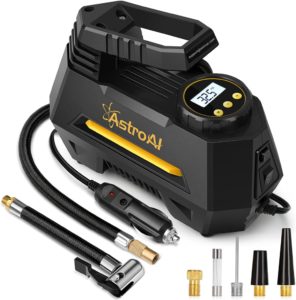What is a Tire Pressure Monitoring System?
Ever heard of the term “tire pressure monitoring system“? This handy system is engineered to continuously keep an eye on the air pressure in your BMW 6 Series tires. If the tire pressure falls below a specific threshold, a warning light will pop up on your dashboard, prompting you to address the issue. Addressing the light is vital to preventing issues like decreased gas mileage or even a flat tire. This is why the TPMS is a seemingly minor but incredibly important feature that bolsters your safety while driving.
How to Reset BMW 6 Series Tire Pressure Warning Light:
VERSIONS
2003 – 2010 (E63/E64)
In the iMenu, push down the scroll wheel.
Select VEHICLE SETTINGS.
Scroll through on the top of the menu and select FTM.
Select SET TIRE PRESSURE.
Select YES when prompted
Menu will read “Status: Initializing”
Drive the vehicle.
2011 – 2018 (F06/F12/F13) iDrive
Select the MENU button on the Idrive system
Select VEHICLE INFORMATION from the main Idrive menu using the Idrive scroll and selector wheel.
Select VEHICLE STATUS
Select PERFORM RESET
Select PERFORM RESET again
Drive the vehicle!
2017 – PRESENT (G32)
Select CAR on the Idrive infotainment screen
Select VEHICLE STATUS
Select TIRE PRESSURE MONITOR
Select TIRE SETTINGS
Choose the correct TIRE TYPE (choose summer or winter if you swap tires for different seasons)
Select SAVE TIRE SETTINGS
If you are swapping between winter and summer tires, follow the same steps but select PERFORM RESET after selecting the season.
Everything in this article is applicable to all BMW 6 SERIES versions and models including M competition versions. (640i, 645ci, 650i, M6)
2022 BMW WARNING RESET - iDrive
How Does the BMW 6 Series TPMS Work?
•The BMW 6 Series is equipped with a TPMS that continuously monitors tire pressure to ensure optimal performance, safety, and fuel efficiency.
• Sensor placement: Each wheel has a pressure sensor mounted on the valve stem, which measures the tire pressure and sends the data to the vehicle central control module.
• Real-time monitoring: The TPMS continuously checks the tire pressure, comparing it to the manufacturer-recommended levels.
• Warning indicators: If a tire’s pressure drops below the recommended level or deviates significantly from other tires, the TPMS triggers a warning light on the dashboard.
• Information display: The BMW 6 Series’ iDrive system displays detailed tire pressure information, allowing the driver to view the exact pressure levels of each tire.
• Maintenance: Periodic maintenance of the TPMS is necessary to ensure accurate readings, including battery replacement in the sensors and software updates.
When to Reset BMW 6 Series Tire Pressure Light?
• When you get new tires: Pressure levels might be different from the old ones.
• After a tire rotation: So it can accurately monitor the pressure of each tire in its new position.
• Changing seasonal tires: If you switch between summer and winter tires.
• Adjusting tire pressure: If you’ve altered your tire pressure due to load.
• After inflating your tires: When you’ve inflated your tires to the right pressure after receiving a low-pressure warning.
• Installing a new sensor: If you need to replace a damaged or malfunctioning sensor.
• If your TPMS malfunctions: If your TPMS shows an error message or isn’t working right.
• After wheel rotations, balances or alignments.
• During routine maintenance: As part of your car’s regular maintenance.
• After a software update: If your car gets a TPMS-related software update.
What are Common Causes for BMW 6 Series Tire Pressure Light to Turn On?
• Low tire pressure: The most common cause for the tire pressure light to turn on is that one or more tires have pressure below the recommended level.
• Rapid pressure loss: A sudden drop in tire pressure, often caused by a puncture or leak.
• Temperature fluctuations: Changes in ambient temperature can affect tire pressure. This can cause the TPMS light to turn on if the pressure falls outside the acceptable range. (this is very common!)
• Faulty TPMS sensor: A malfunctioning or damaged TPMS sensor can cause inaccurate readings.
• Dead sensor battery: TPMS sensors are powered by batteries, (watch batteries) which will eventually die.They usually last around 5 to 7 years.
• High tire pressure: Overinflating your tires can also cause the tire pressure light to come on.
• Tire damage: Physical damage to the tire, such as sidewall bulges, cuts, or cracks, can cause pressure changes and trigger the tire pressure light.
• Wheel/Rim Damage: In BMW’s wheel cracks causing air leaks is a very common issue.
• Spare Tire: Driving with a spare tire or donut on the car that does not have a sensor.
• Recent tire service: If the TPMS wasn’t reset properly after tire rotation, installation, or inflation.
• Malfunctioning TPMS control module: A faulty TPMS control module may not process sensor data correctly.
• Seasonal tire changes: Switching between summer and winter tires without resetting the TPMS.
• Dead or Jumped Battery: After replacing or jumping your vehicle battery.
What Happens When Your BMW 6 Series Tires are Underinflated?
When the tires of your BMW 6 Series are underinflated, it can lead to a variety of issues that can affect your driving experience and safety. First and foremost, underinflated tires have more surface area in contact with the road, resulting in increased rolling resistance. This not only reduces fuel efficiency but also generates more heat, which can potentially cause tire damage or a blowout. Additionally, underinflated tires can compromise your vehicle’s handling, making it harder to steer, brake, and corner effectively. This is especially dangerous at high speeds or during sudden maneuvers. For all of these reasons, we highly recommend checking your tire pressure at least once a month and before any long trips!



